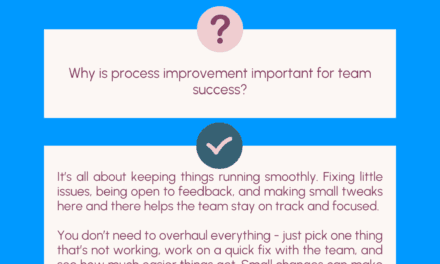Starting and running a small business is no small feat; it requires a delicate dance of balancing operational and leadership responsibilities to steer the ship towards success. How can small business owners effectively juggle the day-to-day demands of running a business while also providing visionary leadership? Join us on a journey to master the art of striking this essential equilibrium, where operational efficiency meets strategic leadership prowess.
Strategies for Prioritising Operational and Leadership Duties
As a small business owner, finding the right balance between operational tasks and leadership responsibilities is crucial for long-term success. Here are some effective strategies to help you prioritise and manage both aspects effectively:
Identifying Key Operational Tasks
Conduct a thorough analysis of your daily operational activities.
Identify tasks that directly contribute to business operations and those that are more managerial in nature.
Prioritise tasks based on their impact on the overall business goals and objectives.
Delegating Responsibilities Effectively
Recognise your strengths and weaknesses to delegate tasks wisely.
Empower your team members by assigning tasks according to their skills and expertise.
Regularly review delegated tasks to ensure accountability and efficiency.
Setting Clear Leadership Objectives
Define specific leadership objectives that align with your business values and vision.
Communicate these objectives clearly to your team to ensure everyone is on the same page.
Regularly assess your progress towards leadership goals and make necessary adjustments.
By implementing these strategies, you can enhance your ability to balance operational and leadership responsibilities effectively. For further insights on leadership development, consider exploring resources provided by established companies such as Google.
Developing Effective Communication Channels
Successful leadership hinges on effective communication channels that promote transparency and alignment between operational tasks and leadership responsibilities. Here are key strategies to enhance communication within your organisation:
Creating Transparent Communication Practices
Encourage open and honest communication among team members.
Establish regular channels for feedback and suggestions.
Ensure that information flows freely across all levels of the organisation.
Ensuring Alignment Between Operational and Leadership Teams
Foster collaboration between operational and leadership teams.
Conduct regular meetings to discuss progress, challenges, and strategic objectives.
Align operational tasks with the broader vision set by leadership.
Utilising Feedback Mechanisms for Improvement
Implement feedback loops to gather insights from employees and stakeholders.
Act on feedback to address areas of improvement in both operational and leadership functions.
Continuously refine communication strategies based on feedback received.
By prioritising transparent communication, fostering alignment between teams, and leveraging feedback mechanisms, you can strengthen the connection between operational tasks and leadership responsibilities. For additional guidance on effective communication practices, explore resources from reputable companies like Apple.
Building a Strong Organisational Culture
Cultivating a strong organisational culture is essential for harmoniously balancing operational and leadership responsibilities within a small business. Here are key steps to foster a positive and impactful culture:
Aligning Values with Actions
Set clear values and standards that reflect the ethos of your business.
Lead by example and embody the core values in your daily interactions.
Ensure that operational decisions and leadership actions align with the established values.
Promoting Accountability at All Levels
Hold yourself and your team accountable for their roles and responsibilities.
Establish clear performance metrics and goals to track progress.
Encourage a culture of responsibility and accountability in both operational and leadership aspects.
Fostering a Culture of Continuous Learning and Development
Invest in training and development opportunities for employees at all levels.
Encourage a growth mindset and a willingness to learn from challenges.
Create a supportive environment that values ongoing learning and personal development.
By focusing on aligning values with actions, promoting accountability, and fostering a culture of continuous learning and development, you can enhance the organisational culture and effectively navigate the balance between operational and leadership responsibilities. For further insights on building a strong organisational culture, refer to resources provided by companies such as Amazon.
Leveraging Technology for Efficiency and Effectiveness
In today's digital age, leveraging technology is paramount for small businesses seeking to balance operational and leadership responsibilities effectively. Here are practical ways to utilise technology for enhanced efficiency and effectiveness:
Implementing Tools for Streamlined Operations
Integrate project management software to track tasks and deadlines.
Utilise automation tools for repetitive operational processes.
Invest in customer relationship management (CRM) systems for efficient customer interactions.
Utilising Data-Driven Insights for Decision-Making
Implement analytics tools to gather and analyse key performance indicators.
Use data to inform strategic decisions related to operations and leadership.
Leverage business intelligence software for actionable insights.
Integrating Technology to Support Leadership Initiatives
Utilise virtual communication tools for seamless interactions with remote teams.
Implement collaborative platforms for project management and team alignment.
Explore leadership development apps for personal growth and skill enhancement.
By embracing technology to streamline operations, harness data-driven insights, and support leadership initiatives, small businesses can enhance their ability to balance operational and leadership responsibilities effectively. For further guidance on leveraging technology for business success, consider exploring resources from industry leaders such as Microsoft.
Balancing Short-Term Goals with Long-Term Vision
Achieving a harmonious balance between short-term operational goals and long-term strategic vision is essential for sustainable growth and effective leadership in small businesses. Here are actionable steps to align short-term objectives with a long-term perspective:
Setting SMART Goals for Operational Tasks
Define Specific, Measurable, Achievable, Relevant, and Time-bound objectives for operational activities.
Prioritise short-term goals that contribute directly to the overarching business strategy.
Regularly review and adjust goals to ensure they align with the evolving needs of the business.
Aligning Actions with the Overall Business Strategy
Ensure that operational decisions and actions are in line with the long-term vision of the company.
Communicate the strategic direction to all team members to foster alignment.
Constantly evaluate the impact of operational tasks on the broader business goals.
Cultivating a Forward-Looking Leadership Approach
Encourage a proactive leadership mindset that anticipates future challenges and opportunities.
Invest in strategic planning to adapt to market trends and industry changes.
Continuously assess and refine the long-term vision based on feedback and insights.
By integrating SMART goal-setting practices, aligning actions with the business strategy, and fostering a forward-looking leadership approach, small business owners can navigate the delicate balance between short-term operational tasks and long-term vision effectively. To delve deeper into strategic goal-setting, consider exploring insights from leading companies like IBM.
Personal Development and Self-Care for Sustainable Leadership
Personal development and self-care are integral components of maintaining a healthy balance between operational duties and leadership responsibilities in small businesses. Here are essential practices to enhance personal growth and well-being:
Importance of Self-Awareness in Leadership Roles
Cultivate self-awareness through reflection and introspection.
Identify strengths and areas for improvement to enhance leadership effectiveness.
Seek feedback from peers and mentors to gain valuable insights for personal development.
Time Management Strategies for Balancing Responsibilities
Prioritise tasks based on urgency and importance to manage time effectively.
Implement time-blocking techniques to allocate dedicated time for both operational and leadership duties.
Delegate tasks when necessary to alleviate workload and create space for personal growth activities.
Prioritising Well-Being to Drive Long-Term Success
Make self-care a priority by incorporating healthy habits into your daily routine.
Schedule regular breaks and downtime to recharge and prevent burnout.
Invest in activities that promote mental and physical well-being, such as exercise, mindfulness, and self-care practices.
By nurturing self-awareness, implementing effective time management strategies, and prioritising well-being, small business owners can cultivate sustainable leadership practices that support the balance between operational responsibilities and leadership roles. For comprehensive resources on personal development and self-care, consider exploring insights shared by reputable companies like LinkedIn.
Conclusion: Mastering the Art of Balancing Operational and Leadership Responsibilities
Successfully managing the delicate balance between operational tasks and leadership responsibilities is a key challenge for small business owners striving for growth and sustainability. By implementing a strategic approach that combines effective communication, thoughtful delegation, and a focus on personal development, entrepreneurs can navigate this dynamic landscape with confidence and clarity.
In today's fast-paced business environment, the ability to balance operational efficiency with visionary leadership is a distinguishing factor for long-term success. Small business owners must continuously refine their skills, adapt their strategies, and nurture a supportive organisational culture to thrive in an ever-evolving marketplace.
Remember, the journey towards mastering this art is ongoing and requires commitment, flexibility, and a willingness to embrace change. By incorporating the strategies and insights shared in this post, you can enhance your leadership effectiveness, drive operational excellence, and ultimately propel your business towards sustainable growth and success.
For further inspiration and guidance on leadership development and operational efficiency, explore resources provided by established industry leaders such as Oracle. Embrace the challenge, embrace the opportunities, and embrace your role as a purpose-driven leader in your small business journey.
FAQs on Balancing Operational and Leadership Responsibilities
How can I effectively prioritise between operational tasks and leadership responsibilities?
Prioritisation is key to finding the right balance. Start by identifying urgent operational tasks that directly impact business outcomes, and align them with your long-term leadership objectives.
Is delegation essential in managing operational and leadership duties?
Absolutely. Delegating tasks based on team strengths and skills is crucial for maintaining efficiency and fostering a collaborative environment that supports both operational and leadership functions.
What role does technology play in balancing operational and leadership roles?
Technology can streamline operational processes, provide valuable data insights for decision-making, and facilitate effective communication between operational and leadership teams, enhancing overall efficiency.
How can personal development contribute to better leadership in small businesses?
Investing time in personal development activities such as self-awareness exercises, time management strategies, and well-being practices can enhance leadership skills and resilience, ultimately leading to more effective decision-making.
Why is it important to align short-term goals with long-term vision in small businesses?
Aligning short-term goals with the long-term vision ensures consistency and progress towards overarching business objectives. It helps maintain focus, drive strategic initiatives, and sustain organisational momentum in the desired direction.





